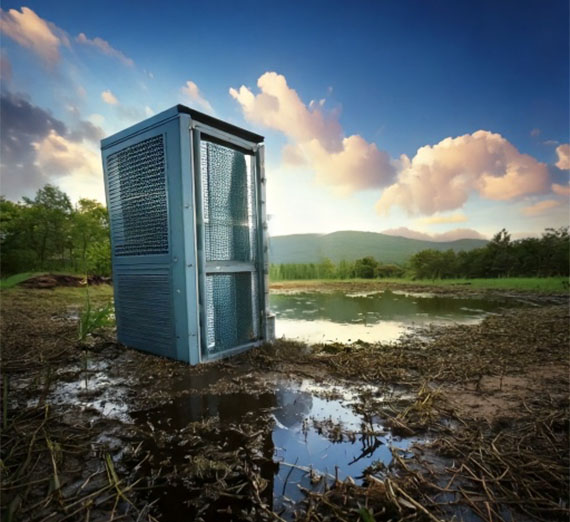What Impact Does AI Have on the Environment?

The use and implementation of AI has led to great technological innovation felt in the daily lives of many. Even though most AI models are free to use, this cost is pushed onto the environment through energy and water demand.
AI, especially large language models (LLMs) like Chat-GPT, draw significantly more electricity than a typical Google search – . Comparing the carbon footprint of both, they produce 68g and .2g of CO2 respectively.
OpenAI, the creators of Chat-GPT, are heading the Stargate Project which is projected to be the largest collection of data centers in the world. Starting in Abilene, Texas, and planned to expand globally, Stargate is set to be complete and operational come 2028.
Hugh Lefcort, an environmental science professor at –”∞…‘≠¥¥, believes the biggest implication of AI’s environmental effect is the exponential growth of data centers to run AI. “All the climate goals are now out the window," he says.
While some of this electric demand will be supported with renewable energy sources, the majority will be reliant on fossil fuels. Already, of data centers are powered by fossil fuels as of 2023, with this number expected to grow exponentially as AI expands.
Keep in mind that this 15 GW demand only takes one data center project into consideration, albeit the largest. However, there are of current data centers that are already operational and being expanded to meet AI demand, each having to use more fossil fuels for power.
With the massive amounts of electricity needed to power these data centers comes an immense amount of generated heat. To combat this heat and to prevent any hardware from melting, water is used to cool the system.
A large data center needs up to per day to quench its “thirst.” Additionally, every is estimated to use one bottle of water for cooling. Multiply this by the hundreds of millions of daily users of LLMs like Chat-GPT and it accounts for billions of gallons annually.
Most current data centers have open-loop cooling, which captures water from nature, utilizes it, then returns it to the environment .
These open-looped data centers are particularly problematic when located in areas that suffer from water scarcity, putting further strain on an already struggling water source. Most new data centers however, want to implement closed-loop systems, which would only require “top-offs” after their initial million(s)-gallon capture. Further, this does not account for the water needed to produce steam in fossil fuel power plants, so despite closed-loop systems, the water demand is still expected to grow.
On the flip side, Lefcort points out that AI has the potential to in some environmental issues. Some ways in which this can occur is from AI’s capability to closely monitor climate change and natural environments, mitigating negative effects. AI also can hasten our shift towards a circular economy by minimizing waste, promoting reuse of resources and optimizing energy consumption. Pollution can be lessened from AI by the discovery of alternative chemicals and molecules.
If AI truly is the future for our society, and given our environmental goals, it should be implemented in a manner that considers the immense electric demand, the implications it holds on the environment, and local stakeholders’ viewpoints. This way, it can be utilized for good and mitigate potential energy and water problems.
–”∞…‘≠¥¥'s Institute for Climate, Water, and the Environment and Institute for Informatics and Applied Technology are co-hosting an event in spring 2026 to address topics related to AI, climate change and energy demand. to learn about upcoming events.
